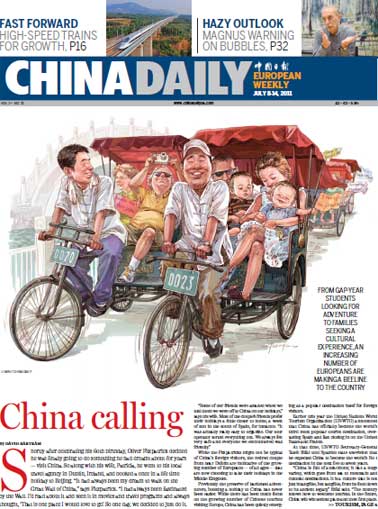Technology
Getting technical over food traceability
Updated: 2011-07-11 11:00
By He Wei (China Daily)
SHANGHAI - China is embracing the "Internet of Things" (IoT) technology as part of an effort to address thorny food security issues, a government official said.
A pilot program will include the establishment of a cloud computing center in Shanghai's Jinshan district to ensure food traceability, Li Bin, director of the Ministry of Industry and Information Technology's (MIIT) information center, told China Daily.
This means tracing food or ingredients across the partially or entirely reconstructed supply chain, so that recalls can be issued when quality problems arise, Li said on the sidelines of IoT China 2011 Conference and Exhibition in Shanghai.
It also allows real-time detection of animals, for example during outbreaks of contagious disease, for control, survey and prevention, Li added.
The country's 12th Five-Year Plan (2011-2015) gave prominence to the development of the IoT. It refers to uniquely identifiable objects and their virtual representations in an Internet-like structure. Radio-frequency identification (RFID) is ideal for the IoT. If all objects were equipped with radio tags, they could be identified and inventoried by computers. However, individual identification of things may be achieved through other means such as barcodes.
In the area of food security, livestock would be fitted with RFID chips and RFID readers would be placed at various monitoring spots. This would automate the process of keeping track of a food's origin, Li told China Daily.
Later, one or two-dimensional bar codes can be implanted in a food item to provide data on where and when it was sold.
"This will enable seamless tracking in the food supply chain from field and production to consumption," Li said.
Food security has topped China's concerns amid several health scares involving additives and growth-enhancers. IoT applications in food traceability are so far only at an early stage.
Traceability in Europe is enforced through European Union Regulation 178/2002, and through the Food and Drug Administration in the United States.
The trend in China is to encourage downward trailing, according to Zhang Yuangang, chief executive officer of the IoT Experience and Promotion Center under the auspices of MIIT. By customizing digital scales in eight grocery markets in Shanghai, the authorities can keep a record of buyers who make purchases with bank cards. In this respect, the scales and bank cards have essentially become sensors and RFID readers.
"During epidemics, affected consumers can be informed outright and the potential risks become manageable," Zhang told China Daily.
The technology also helps to control grocery prices, Zhang said. It is set to be extended nationwide in coming years.
At least 24 million to 81 million illnesses are caused a year by unsafe food worldwide. Efficient IoT technologies will help form a healthy food life-cycle, said Zheng Lirong, president of the School of Information Science and Engineering at Fudan University.
But Zheng is calling for a more open IoT architecture with standard interfaces and communication protocols, run by an independent third party.
"Given the high cost of technology input, a proper revenue model should be discovered to not only encourage farmers (to use such technologies), but also to deter bribery in supervision departments," Zheng said.
E-paper

Burning desire
Tradition overrides public safety as fireworks make an explosive comeback
Melody of life
Demystifying Tibet
Bubble worries
Specials

90th anniversary of the CPC
The Party has been leading the country and people to prosperity.

Say hello to hi panda
An unusual panda is the rising star in Europe's fashion circles

My China story
Foreign readers are invited to share your China stories.
